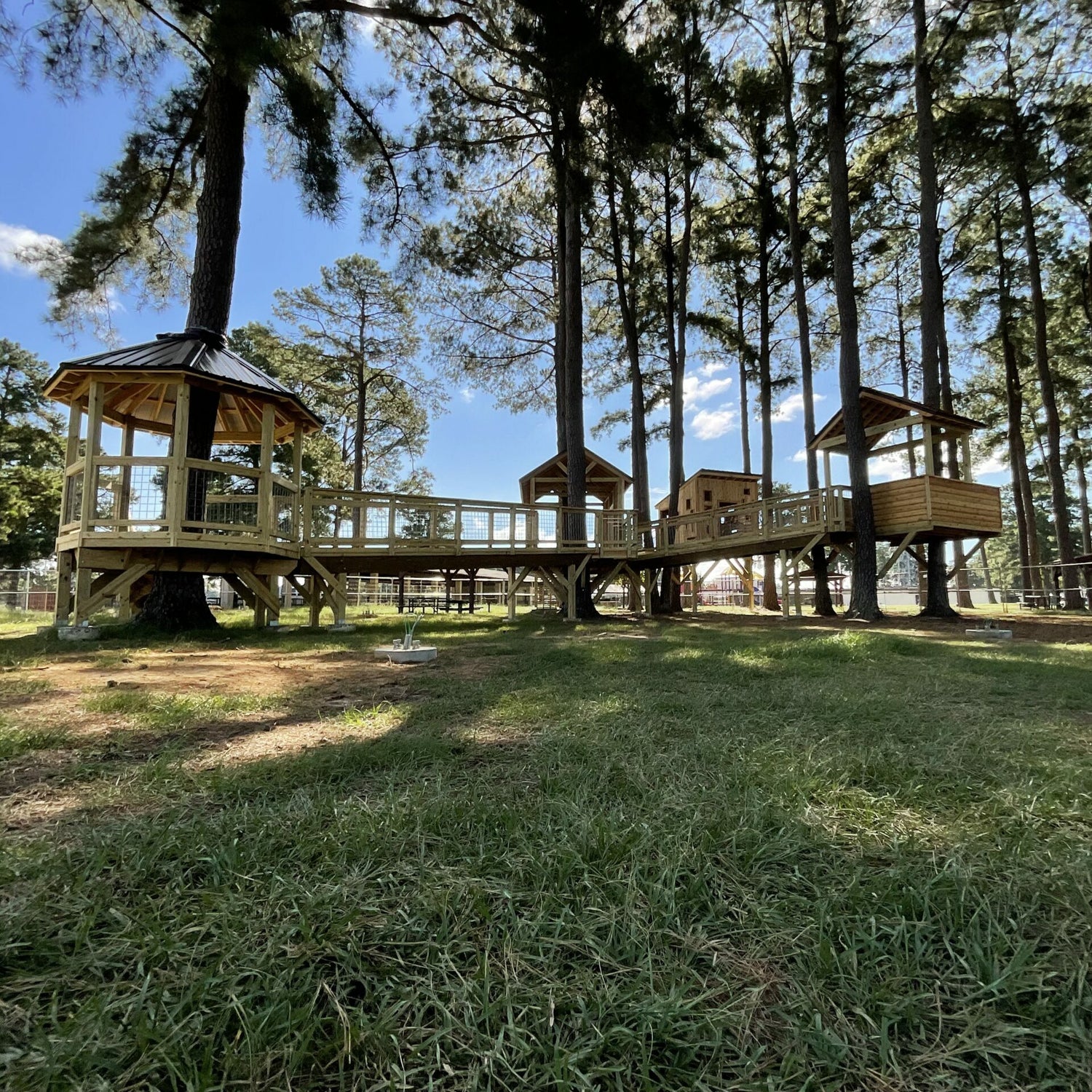Maintenence

Maintenance of Treehouses
Building in a living and growing foundation presents several maintenance challenges not present in traditional structures. We build our treehouses with future maintenance in mind because most people want their treehouses to last 10-20 years or more. Even if your kids move out when they grow up, they might bring your grandkids back to enjoy the treehouse. Memories can last for generations. The well built treehouse will be ready for them with some attention to maintenance at regular intervals.
Common Maintenance Issues:

- Wood Protection: All wood is susceptible to weathering from sun, wind, and water/ice. Insects and decay can further break down wood left untreated. Some species of wood do better on their own than others, but applying wood sealers and protective stains every 3-8 years can prolong the life of the wood.
- Tree Growth: Most mature trees in North America have relatively slow growth rates, adding only around 1/8" to 1/2" per year. As the tree grows, it will eventually contact wood (beams, joists, flooring, rooflines) which will inhibit future growth and cause rubbing when the wind blows. The well built treehouse will take future growth into consideration and so the first couple services should get you through the first decade or more without major maintenance. At some point, however, the main beams of the house need to be moved and that can be a fairly big project.
- Storm Damage: Treehouses hold up remarkably well through storms. Keep in mind that they do not flood very often. When Hurricane Sandy blew through the East Coast, we heard reports of damaged treehouses all over. Only 2 of them were our projects, and both were repaired with less than a day's work. The type and extend of damage and repairs needed can vary. Call us for an inspection, or if we are far away, then you can email photos to us or have a local carpenter look at it.
- Animal Damage: This is usually not a big problem, but sometimes squirrels or birds find ways to nest in treehouses and various types of damage can occur as a result. Chewwed wood, piles of nuts, or stains are signs that somebody has moved in. Replacing damaged materials and blocking up access areas is the way to treat this problem. Occasionally bees can be a problem and there are a host of over the counter methods of killing them or discouraging them from nesting on your treehouse. Or, you can always call a local pest control or exterminator.
- Roof Issues: If trees pass through the roof, you should expect to re-waterproof the area at least every few years. It could be as simple as recaulking as the tree grows new layers of bark. We always use the best, most flexible caulk to extend the life of our work as much as possible. However, when large wind storms make trees whip around, there is only so much that can be done to keep it 100% dry. If a treehouse must always stay 100% dry, then it can't have a living tree inside of it.
THE WORLD'S BEST TREEHOUSES
Our Tree House Portfolio has six styles of treehouse projects to choose from. View some of the fantastic builds we have worked on over the years that might fit what you might be looking for!

